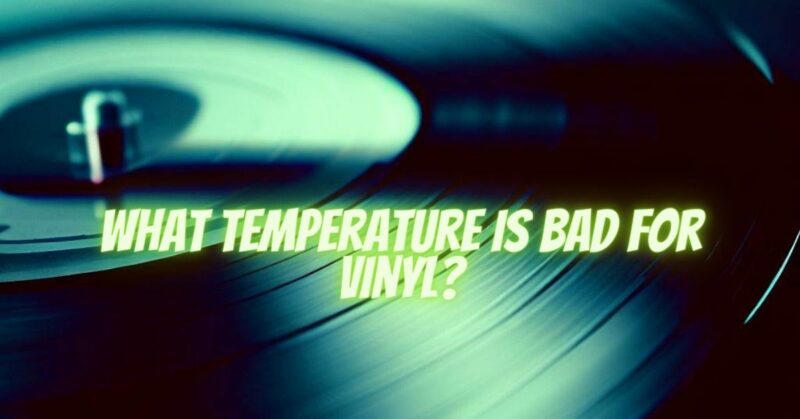Vinyl records, with their timeless appeal and distinctive sound, require proper care to ensure their longevity and optimal playback. Among the critical factors influencing vinyl record preservation, temperature plays a significant role. In this article, we will explore the temperature thresholds that can adversely affect vinyl records and provide guidance on maintaining a suitable environment to safeguard your cherished collection.
- The Impact of Extreme Heat:
Vinyl records are susceptible to damage when exposed to extreme heat. High temperatures can cause the vinyl material to soften and warp, distorting the shape of the record and compromising its playability. It is crucial to avoid subjecting vinyl records to direct sunlight or storing them in areas with excessively high temperatures.
- Temperature Guidelines for Vinyl Preservation:
To maintain the quality and longevity of your vinyl records, it is advisable to adhere to the following temperature guidelines:
a. Ideal Temperature Range: Aim to store your vinyl records in a temperature-controlled environment with a range of 60°F to 70°F (15°C to 21°C). This temperature range helps prevent warping and degradation of the vinyl material.
b. Avoid Extreme Fluctuations: Rapid temperature fluctuations can be detrimental to vinyl records. Avoid storing them in areas prone to significant temperature swings, such as attics, garages, or basements lacking proper insulation. Sudden changes in temperature can cause stress on the records, leading to warping or even cracks.
c. Protect from Direct Sunlight: Ultraviolet (UV) rays from sunlight can raise the temperature of vinyl records and accelerate the warping process. Ensure that your records are stored away from windows or use UV-blocking curtains or blinds to minimize exposure to sunlight.
- Humidity Considerations:
While temperature is a crucial aspect, humidity levels also influence vinyl record preservation. High humidity can promote the growth of mold and mildew, leading to irreversible damage to both the vinyl and the record covers. Aim for a relative humidity (RH) level between 40% and 50% to prevent excessive moisture absorption or warping of the records.
- Additional Precautions:
Apart from temperature control, here are a few additional precautions to help protect your vinyl records:
a. Proper Shelving: Store your records vertically to prevent warping under their weight. Use sturdy and adequately spaced shelves to avoid excessive pressure on the records.
b. Handling with Care: Always handle vinyl records with clean hands and hold them by their edges or the label area to avoid smudges, fingerprints, or accidental scratches. Mishandling can lead to irreversible damage, regardless of the temperature.
c. Regular Inspection: Periodically inspect your vinyl records for signs of warping, mold growth, or damage. Early detection can help prevent further deterioration and enable timely intervention.
Conclusion:
Maintaining an appropriate temperature is crucial for the preservation of your vinyl records. By adhering to the recommended temperature range, avoiding extreme fluctuations, protecting records from direct sunlight, and considering humidity levels, you can safeguard your cherished collection. Remember, a stable and controlled environment helps ensure that your vinyl records continue to deliver the warm and captivating sound that has made them beloved by music enthusiasts for generations.

